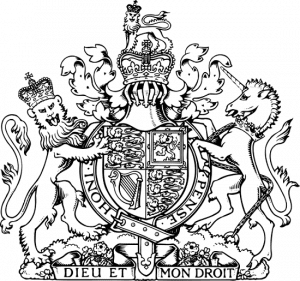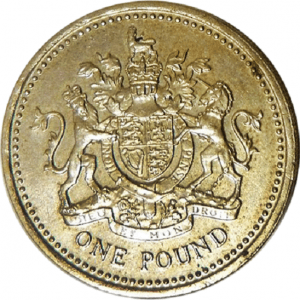Dieu et Mon Droit – How did this French Phrase get Used on British Coins?
11/03/2021Daniel Fisher
Free & fully insured UK Delivery. Learn more
Secure & flexible payments. Learn more

Buyback Guarantee Learn more
The origin of the phrase goes back to the time of Richard I, who was descended from French ancestry. King Richard was the King of England from 1189 till his demise in 1199. King Richard used this phrase to announce that it is the divine right of the King, or Monarch to govern.
The phrase was later adopted by King Henry V, as the Royal motto for the Kingdom of England. The phrase now appears on the coat of arms used by the British monarchy. People often wonder how a French phrase could be adopted by the English Royal Family. However, mediaeval England was not the same place that we know now. Norman-French was the language of the English Royal Court at the time. The rulers and the upper classes also spoke this language during that period.

The Royal Coat of Arms
When translated, the phrase simply means “God and my right”. Currently, it is the motto of the British Royal Family. A close inspection of the coat of arms used by the British Monarch, reveals that the inscription can be found on a small banner underneath the shield. In the present day, the coat of arms is used by our reigning monarch, Queen Elizabeth II. On the left of the shield, stands the guardian lion wearing the crown of St. Edward. On the right of the shield is a Scottish Unicom. Underneath the shield, there is greenery, with a thistle, Tudor rose and Shamrock. These are representative of the kingdoms of Scotland, England and Ireland. Right below this display is a banner containing the words “Dieu et Mon Droit”.
The coat of arms is the official symbol of the British Queen. Therefore, it is clearly visible in every UK court of law, except for the Supreme Court of the United Kingdom and the Magistrate’s Court in the City of London. It is also used on government documents and you might be able to view it on your passport. Globally, this coat of arms is visible on the entrances to UK embassies and consulates.

1983 one-pound coin
The royal coat of arms has been featured regularly on British coinage, manufactured by the Royal Mint. The most common example of this is the British one pound coin, which has been in circulation since 1983.
By 2008, the Royal Mint had minted a new series of coins with a denomination of 1 pound and below. The full Royal coat of arms appears on the one pound coin with the phrase Dieu et Mon Droit. However, only sections of the coat of arms can be seen on the coins of lower denomination. In 2016, the Royal Mint released a new bimetallic coin called the nations of the crown. Interestingly, an old British coin called the Guinea, which was minted between the years 1663 and 1814 also displayed the royal coat of arms, with the inscription. The coin took its name from the West African nation, Guinea. The gold that was used to mint this coin was sourced from here.
Collecting coins can be an absorbing hobby, and if the coins are produced from precious metals, they can add tremendous value to your collection. Many collectors and investors have questions related to precious metal coins. Call our coin experts on (020) 7060 9992 or reach out to us via our website and we will be happy to advise you on all your coin purchases.
Image credits: Wikimedia Commons and Wikimedia Commons
Live Gold Spot Price in Sterling. Gold is one of the densest of all metals. It is a good conductor of heat and electricity. It is also soft and the most malleable and ductile of the elements; an ounce (31.1 grams; gold is weighed in troy ounces) can be beaten out to 187 square feet (about 17 square metres) in extremely thin sheets called gold leaf.
Live Silver Spot Price in Sterling. Silver (Ag), chemical element, a white lustrous metal valued for its decorative beauty and electrical conductivity. Silver is located in Group 11 (Ib) and Period 5 of the periodic table, between copper (Period 4) and gold (Period 6), and its physical and chemical properties are intermediate between those two metals.